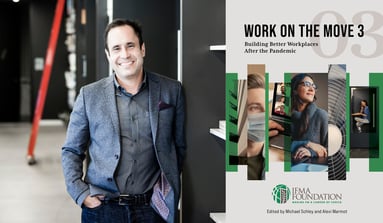Embracing Diversity of Thought: A Pathway to Inclusive Workspaces
"By fostering an environment that supports and encourages diverse ways of thinking, a physical workplace can become a breeding ground for innovation, collaboration, and creativity."
Thomas Breton
Principal, Strategy, Unispace
In today’s globalised world, the term 'diversity of thought' encompasses the perspectives of colleagues from an array of cultural and socioeconomic backgrounds, genders, ages, and abilities. For organisations that choose to develop and embrace diversity of thought, the ability to foster innovation and creativity - as well as aid in recruitment and retention - will be driven to new heights. Embracing this complexity means recognising that each individual’s unique experiences contribute to a richer workplace environment for all. But how does diversity of thought translate into the physical workplace?

Diversity of thought in the physical workplace enables a dynamic environment where different perspectives, experiences, and approaches positively coexist and interact. The physical workplace does not need to be complex to enable this, however it does need to be fit for purpose to your colleague population. Elements that are typically universally incorporated include:
Access to collaborative spaces - workplaces should be designed to encourage collaboration among diverse teams. Open-plan zones, huddle rooms, canteens and communal areas foster spontaneous interactions and cross-functional collaboration. These spaces allow employees with different ways of thinking to come together, share ideas, and work through challenges from multiple angles. In fact, the Global Workplace Analytics study found that 85% of employees who had access to collaborative spaces reported being more engaged at work. Increased engagement is linked to higher levels of motivation and job satisfaction leading, to lower attrition and a positively impacted bottom-line.
Inclusive Design and Artwork – a workplace that values diversity of thought is often designed with inclusivity front of mind, not as an afterthought. This could mean providing various types of workspaces in addition to individual working spaces and settings (e.g., quiet zones for focused work, collaborative zones for teamwork) to accommodate different working styles. Ergonomic furniture, accessible facilities, and flexible workstations are physical manifestations of a workplace that supports diverse needs. The use of artwork and other visual elements that reflect different cultures, values, and ideas can create a more welcoming and stimulating environment. At Unispace, we were proud to launch our Art for Impact programme. Here we commissioned the women collective, Las Tejedoras, to hand stitch a series of distinctive tapestries crafted from recycled ocean plastic. The art pieces enhance the aesthetic appeal of an office while also reflecting an organisations broader mission to make a positive impact.
Meeting Formats and Tools - in a workplace that embraces diversity of thought, you’ll see a variety of meeting formats—some more structured, others more free-flowing. Tools like whiteboards, sticky notes, digital collaboration platforms, and brainstorming stations can support different ways of thinking and problem-solving.
Of course, no physical workplace will be suitable if the people and policies are not aligned.
Flexible policies and spaces go hand-in-hand. Policies that allow for remote work, flexible hours, and personalised workspaces reflect an understanding that people work best in different ways and at different times. A survey by FlexJobs found that 80% of employees would be more loyal to their employers if they had flexible work options. A Deloitte survey showed that 75% of millennials believe that a work-life balance is important for choosing a job, and 67% of employees said that flexibility is a critical factor in their decision to stay with their current employer.
By fostering an environment that supports and encourages diverse ways of thinking, a physical workplace can become a breeding ground for innovation, collaboration, and creativity. This not only enhances employee satisfaction and engagement but also drives the organisation toward more effective problem-solving and decision-making.


